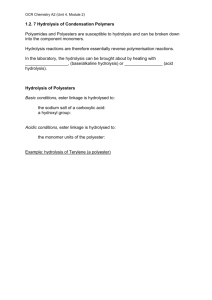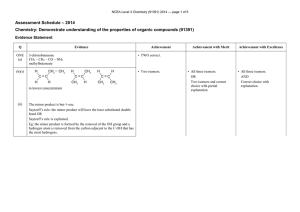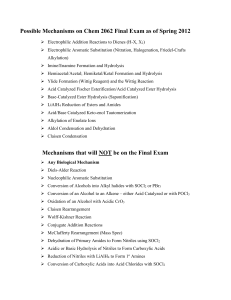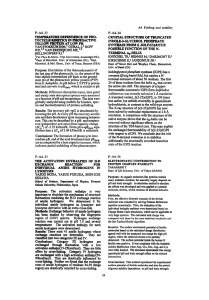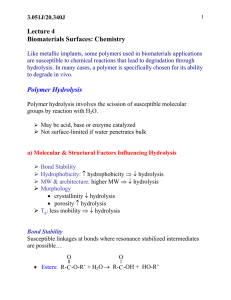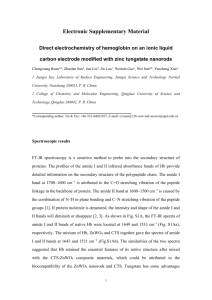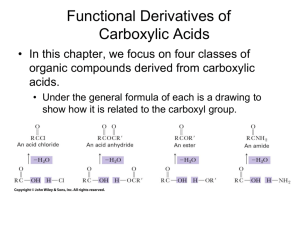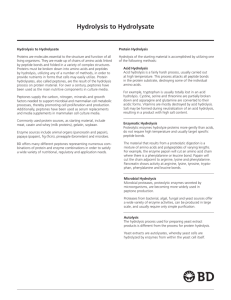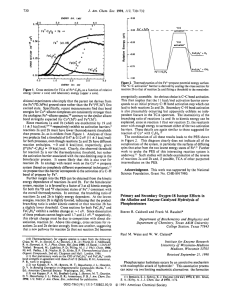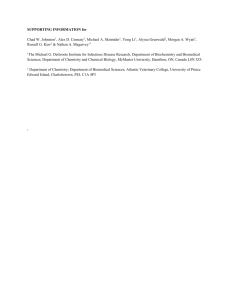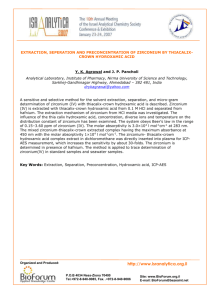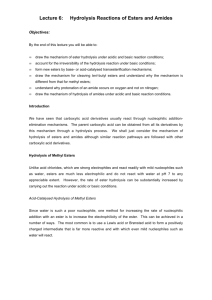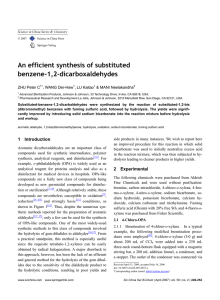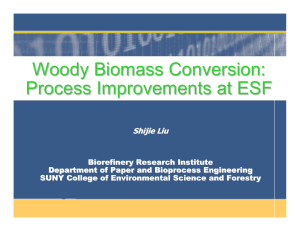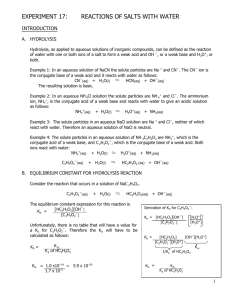Selective hydrolysis of unactivated amide bond by Zirconium
advertisement
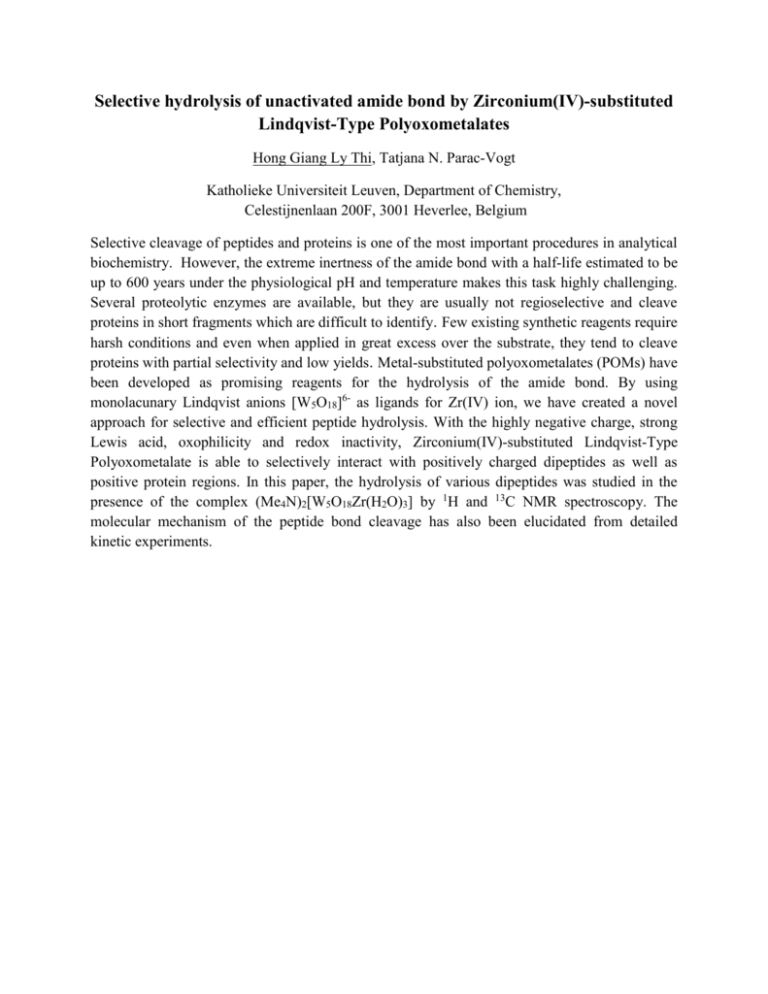
Selective hydrolysis of unactivated amide bond by Zirconium(IV)-substituted Lindqvist-Type Polyoxometalates Hong Giang Ly Thi, Tatjana N. Parac-Vogt Katholieke Universiteit Leuven, Department of Chemistry, Celestijnenlaan 200F, 3001 Heverlee, Belgium Selective cleavage of peptides and proteins is one of the most important procedures in analytical biochemistry. However, the extreme inertness of the amide bond with a half-life estimated to be up to 600 years under the physiological pH and temperature makes this task highly challenging. Several proteolytic enzymes are available, but they are usually not regioselective and cleave proteins in short fragments which are difficult to identify. Few existing synthetic reagents require harsh conditions and even when applied in great excess over the substrate, they tend to cleave proteins with partial selectivity and low yields. Metal-substituted polyoxometalates (POMs) have been developed as promising reagents for the hydrolysis of the amide bond. By using monolacunary Lindqvist anions [W5O18]6- as ligands for Zr(IV) ion, we have created a novel approach for selective and efficient peptide hydrolysis. With the highly negative charge, strong Lewis acid, oxophilicity and redox inactivity, Zirconium(IV)-substituted Lindqvist-Type Polyoxometalate is able to selectively interact with positively charged dipeptides as well as positive protein regions. In this paper, the hydrolysis of various dipeptides was studied in the presence of the complex (Me4N)2[W5O18Zr(H2O)3] by 1H and 13C NMR spectroscopy. The molecular mechanism of the peptide bond cleavage has also been elucidated from detailed kinetic experiments.



